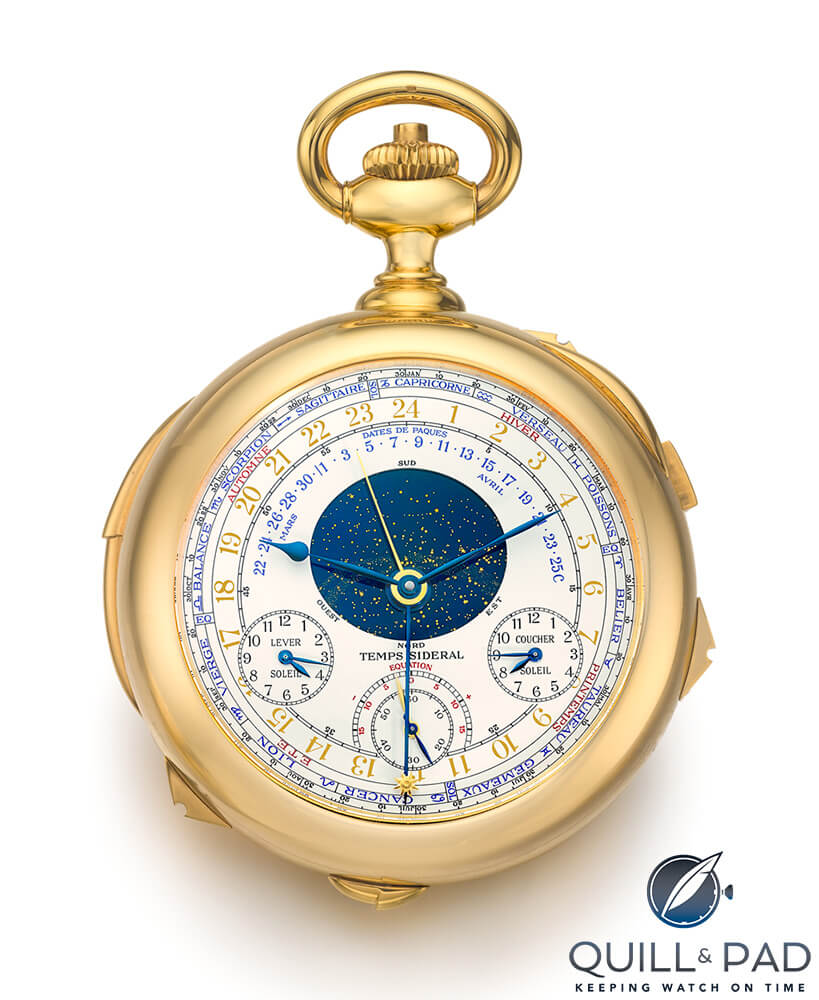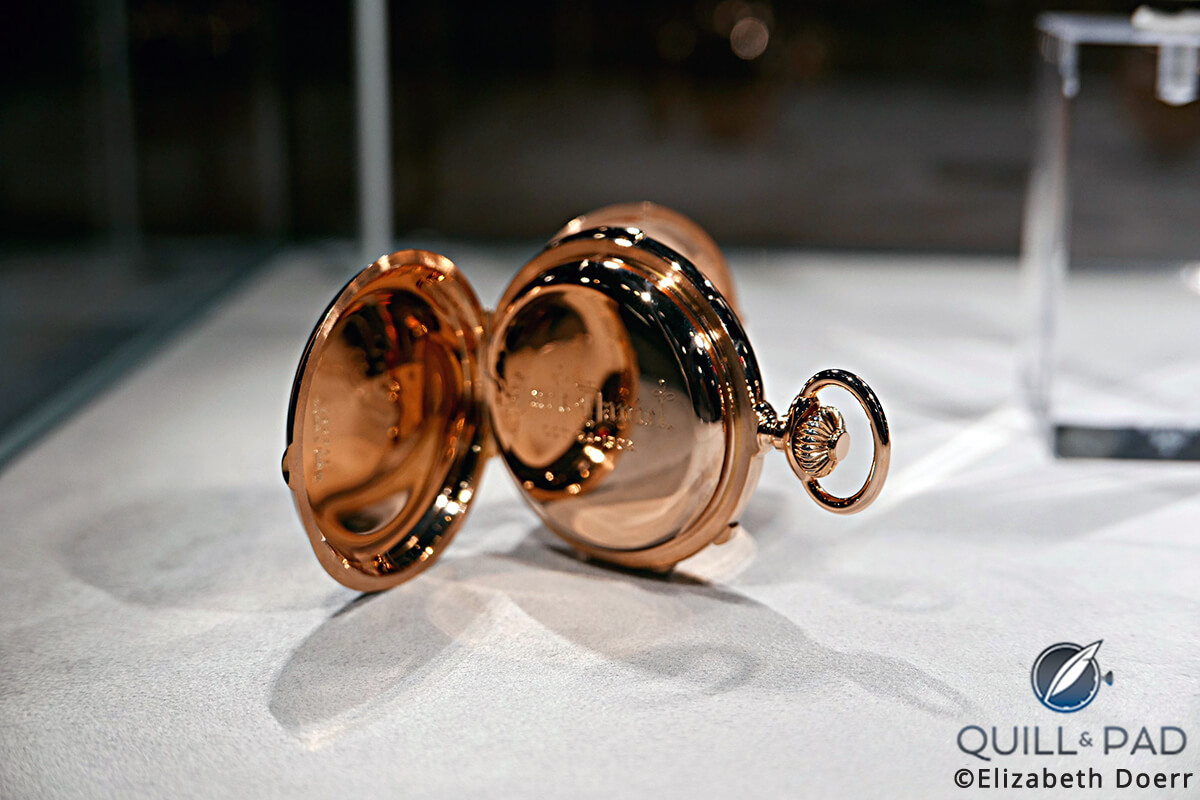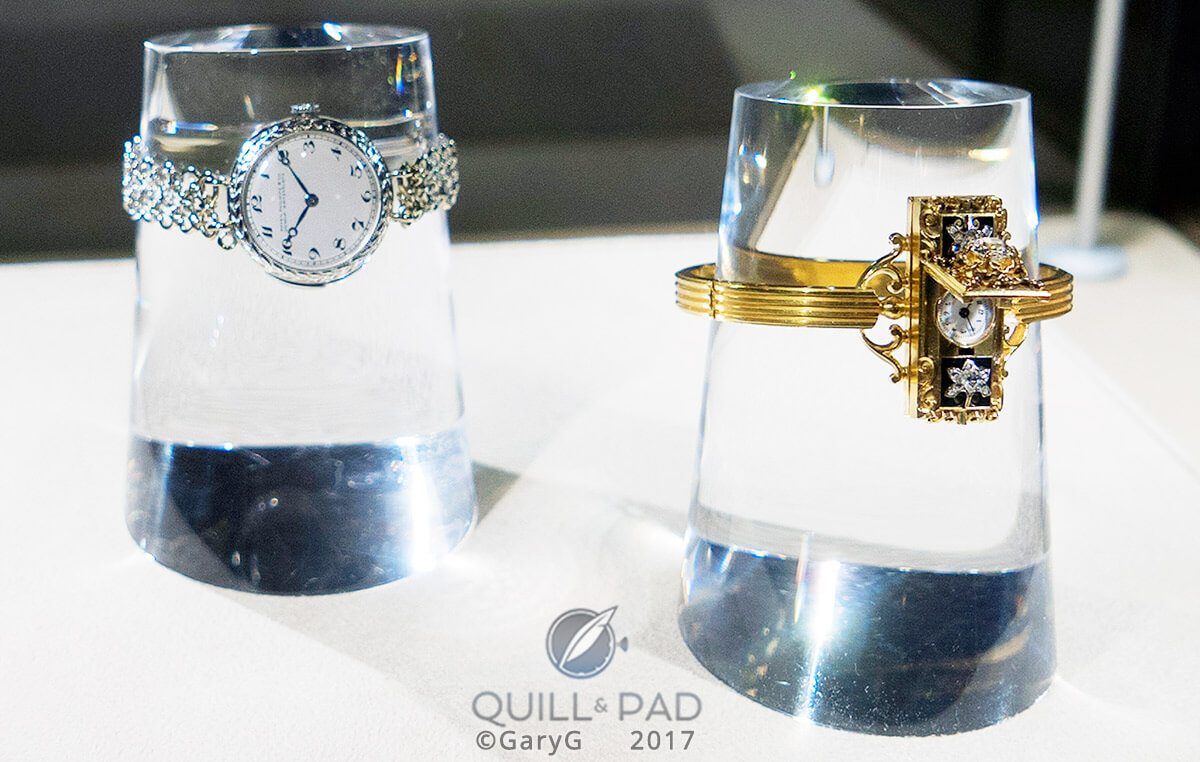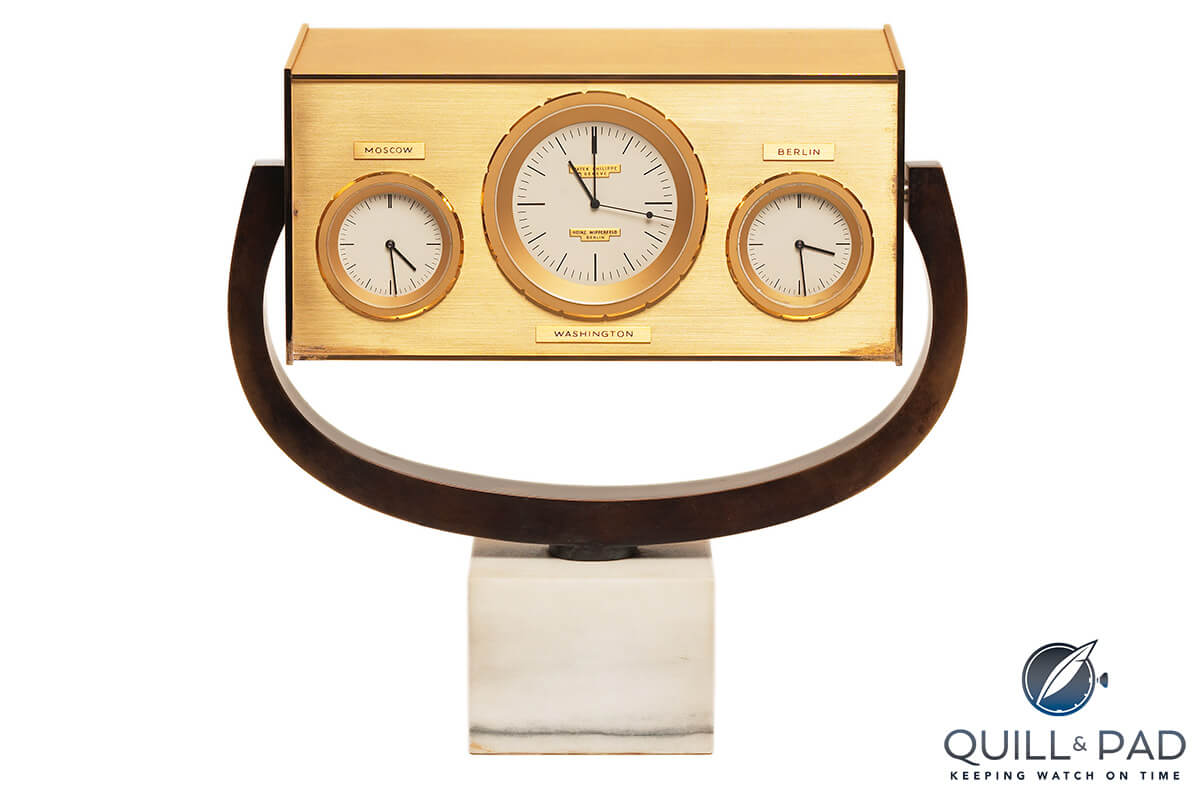The Patek Philippe Art of Watches Grand Exhibition was a once-in-a-lifetime opportunity to experience the world of Patek Philippe and the history of fine timekeeping in a very hands-on way outside of Switzerland.
GaryG did an excellent job of summing up the extensive exposition in You Are There: Patek Philippe (And Virtually Everyone Else) Comes To New York, A Collector’s View, for which reason I now choose to cherry pick the best and most surprising things I saw there, starting with these five items.
Yellow gold Caliber 89 Prototype from the Patek Philippe Museum in Geneva now has a working movement
From its launch in 1989 until the advent of Vacheron Constantin Reference 57260 in 2015 (see Vacheron Constantin’s Reference 57260 Is The Most Complicated Portable Watch In The World), Patek Philippe’s Caliber 89 held the record for being the most complicated timepiece in existence. It remains Patek Philippe’s most complicated timepiece ever.

The production Patek Philippe Caliber 89 in yellow gold (not the one in the Patek Philippe museum)
Only one example of Caliber 89, which celebrated Patek Philippe’s 150th anniversary, was made in each of four precious metals – meaning there is only one yellow gold example. But visitors to the Patek Philippe Museum in Geneva know that there is a second yellow gold case on display that does not contain a movement.
Until now.
The museum’s prized possession recently received a movement made by master watchmaker Paul Buclin, one of the original Caliber 89 engineering team members. This is the first time a fully functional example of Caliber 89 has been shown in public.
It is also the first time that this prototype has left the Patek Philippe Museum.
For more information on this watch, see Patek Philippe Caliber 89, The World’s Most Complicated Watch For 26 Years, To Be Auctioned By Sotheby’s In May 2017 Important Watches Sale.
Quick Facts Patek Philippe Caliber 89
Case: yellow gold, 88.2 x 41.7 mm
Movement: manually wound Caliber 89 with 1,728 components; one-minute tourbillon
Functions: hours, minutes, seconds (mean time on front, sidereal time on back; second time zone, times of sunrise and sunset, equation of time, world time for 125 cities, secular perpetual calendar (day, weekday, month, four-digit year, leap year, “sun hand” for display of the season, equinox, solstice, and zodiac, star chart, age and phase of the moon, date of Easter, Sirius’s passage, the moon’s passage, lunar orbit, and a 24-hour display with day/night indicator), split-seconds chronograph, grande et petite sonnerie with carillon, minute repeater, alarm, 2 power reserve indicators, crown position indicator, thermometer, hygrometer, barometer, altimeter, compass
Limitation: four pieces in total, one encased each in yellow gold, white gold, pink gold, and platinum
Jack Daniel of Tennessee whiskey fame owned a Patek Philippe repeating rattrapante
It is kind of surprising that Jack Daniel’s, the oldest registered distillery in the United States, is not only still going strong, but continues to be incredibly famous. Jasper Newton “Jack” Daniel seems to have had a good eye for early classics: his 1891 watch was of the same ilk.

Jack Daniel of Tennessee whiskey fame owned this Patek Philippe minute repeater rattrapante chronograph
I guess I never would have pictured the Lynchburg, Tennesse native as a connoisseur of fine timepieces. But then again, who can ignore the lure of Patek Philippe’s beautiful wares – especially an amazing split-seconds chronograph with minute repeater?
Quick Facts Jack Daniel’s Pocket Watch
Case: 75.5 x 53.8 x 16.6 mm, pink gold
Dial: white enamel, painted Roman numerals
Movement: manually wound 19’’’Victorin Piguet & Cie. ébauche, movement no. 90 455, straight-line lever escapement, three-quarter plate
Functions: hours, minutes, subsidiary seconds; minute repeater on two gongs, split-seconds chronograph
The very first Patek Philippe wristwatch ever made was created for a woman!
If you’re a regular reader here at Quill & Pad, you’ll probably already know this interesting piece of trivia since I wrote about it in The First Wristwatches From Breguet, Hermès, And Patek Philippe Were Made . . . For Women.

Ladies firsts: from left, the first Patek Philippe repeating wristwatch (1916) and first-ever Patek Philippe watch designed for the wrist (1868)
Patek Philippe’s very first wristwatch was made for a woman, and the item in question was one of the exhibits on display at the Grand Exhibition.
This petite beauty was sold to Hungarian Countess Koscowicz on November 13, 1876.
Quick Facts First Wristwatch Made by Patek Philippe
Case: 13.2 x 32.3 x 13.6 mm, yellow gold, secret watch style, black enamel set with rose-cut diamonds
Dial: white enamel, painted Breguet numerals
Movement: key wound 6’’’ baguette-shaped movement, cylinder escapement
Functions: hours, minutes
Ralph Teetor, inventor of the cruise control, owned the first Patek Philippe minute repeating wristwatch
If you’re like me, you’ve probably never heard the name Ralph Teetor before. But if you’re also like me, then you use his claim to fame on a fairly regular basis: this mechanical engineer invented cruise control.

Ralph Teetor, inventor of the cruise control, owned the first Patek Philippe minute repeating wristwatch
Teetor, who was rendered blind following an accident at the age of five, owned Patek Philippe’s first minute repeating wristwatch. He purchased it from the venerable Genevan brand in 1925 so that he could always know what time it was without having to ask others.
Quick Facts Ralph Teetor Minute Repeater Wristwatch
Case: 35.7 x 27.3 x 8.4 mm, platinum with yellow gold accents
Dial: silvered metal, applied Breguet numerals
Movement: manually wound 10’’’ Victorin Piguet ébauche, movement no. 112 057, straight-line lever escapement
Functions: hours, minutes; minute repeater on two gongs
John F. Kennedy 1963 desk clock
During my short stay in New York City, I had the chance to talk to a lot of different watch people. And one of the conversations I enjoyed most during this time was the afternoon I spent with John Reardon, Christie’s international head of watches. Christie’s was, of course, putting on two large Patek Philippe-themed sales during the 11-day tenure of the Grand Exhibition (see Quite Possibly The Largest Curated Assembly Of Vintage Patek Philippe Watches For Sale In History At Christie’s New York: It’s An 11-Day Sale, But Don’t Dally!).

The John F. Kennedy clock by Patek Philippe symbolizes the famous “Hotline” communication system set up between the U.S.A. and the then Soviet Union in the early 1960s
My conversation with Reardon casually revealed that he was the one to inadvertently “re-find” this clock in the John F. Kennedy Presidential Library files, which had erroneously been filed under “Wipperfeld” for the commissioning German jeweler, when he was researching in preparation for his book Patek Philippe in America, Marketing the World’s Foremost Watch in 2008.
Between the near-miraculous finding of the clock and the insane paperwork it must have taken for Patek Philippe to borrow it for the Grand Exhibition, I consider this one of the most surprising pieces of the exposition. Read about its history and Patek Philippe U.S. president Larry Pettinelli’s remarks regarding it in Patek Philippe President USA Larry Pettinelli Talks His Favorite Timepiece In The 2017 Grand Exhibition: John F. Kennedy’s Clock.
For more information, please visit www.patek.com/en/communication/news/the-art-of-watches-grand-exhibition-new-york-2017.
Quick Facts John F. Kennedy 1963 Desk Clock
Size: 129 x 272 x 115 mm
Materials: gilt brass with marble and wood base
Functions: hours, minutes, sweep seconds; two additional time zones
Movement: quartz Caliber 29, stepper motor driven by six batteries
You might also enjoy:
You Are There: Patek Philippe (And Virtually Everyone Else) Comes To New York, A Collector’s View
Quite Possibly The Largest Curated Assembly Of Vintage Patek Philippe Watches For Sale In History At Christie’s New York: It’s An 11-Day Sale, But Don’t Dally!
Bringing Patek Philippe’s Universe To New York City For 11 Days In July With ‘The Art Of Watches Grand Exhibition’





















































Trackbacks & Pingbacks
[…] Give Me Five! 5 Unanticipated Exhibits At Patek Philippe’s Art Of Watches Grand Exhibition In New … […]
[…] Give Me Five! 5 Unanticipated Exhibits At Patek Philippe’s Art Of Watches Grand Exhibition In New … […]
Leave a Reply
Want to join the discussion?Feel free to contribute!